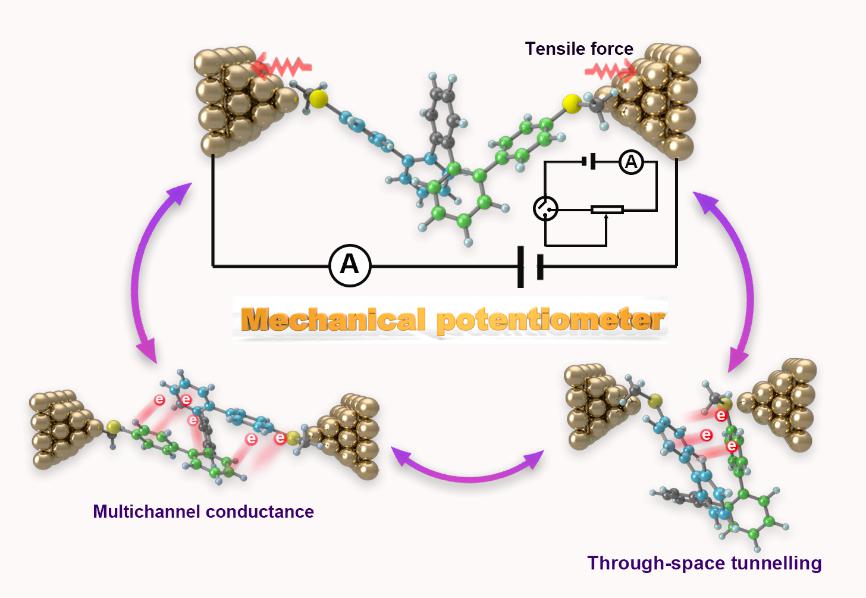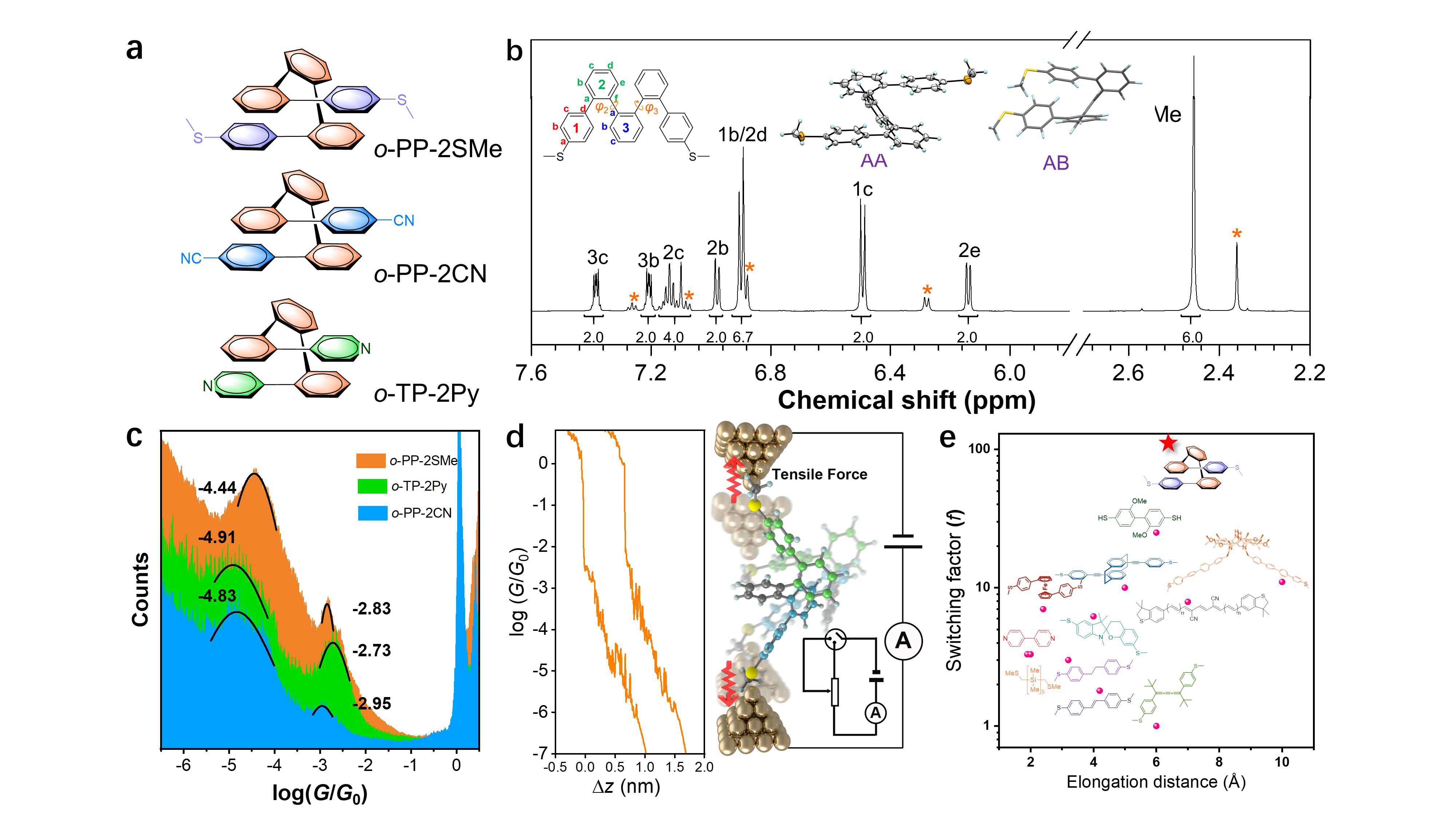
The in-depth pursuit of integration and miniaturization for electronic devices has inspired researchers to adopt bottom-up method and come up with various designs of molecular devices, such as molecular wires, molecular switches and molecular field effect transistors, which has extensively promoted the development of molecular electronics. For the above reasons, Latha Venkataraman and co-workers reported a single-molecule potentiometer, aiming to predict and control molecular conductance by displacement-conductance relationship. The very first reported potentiometer was designed based on linear alkane, altering conductance by controlling the contact position between the tip and the molecule. Silanes and linear molecules with cis-trans isomers are also proved to be responsive to mechanical stimuli. However, the on/off ratios of reported flexible molecules are usually about 10, which are far from satisfaction.
Herein, this work reports a mechanical single-molecule potentiometer based on ortho-pentaphenylene derivatives, realizing on/off ratio over 100 and continuously controllable conductance in the range of two orders of magnitude. Ortho-phenylenes with folded helical structures can undergo conformational interconversion in solution and exhibit pseudo-elasticity, indicating they can be stretched or compressed by external force. Therefore, ortho-pentaphenylene is chosen as a study subject because of its potential in mechanical molecular devices. Multiple conformers of ortho-phenylenes endow them with multiple conductance, and their flexible backbones provide the possibility of the continuous alteration among difference conductance. These spring-like helical molecules show promising potential in precisely predict and effectively control molecular conductance. Moreover, the realization of continuously changing conductance offers intriguing ideas to design mechanical single-molecule potentiometer that can regulate conductance by changing the distance of electrodes in sub-nanoscale.
Ph. D. candidate Jinshi Li and Pingchuan Shen in our group are the co-authors of this article, and the related paper is available online at Nature Communication (DOI: 10.1038/s41467-020-20311-z).

Fig.1. a Chemical structures for o-PP-2SMe, o-PP-2CN and o-TP-2Py. b1H NMR spectrum at -5 °C of o-PP-2SMe in AA conformer with major peaks assigned to specific protons of o-PP-2SMe in AA conformer. Asterisks: the minor signals from AB conformer. c One-dimensional conductance histograms for o-PP-2SMe, o-TP-2Py and o-PP-2CN. d Typical “downhill” conductance-displacement traces for o-PP-2SMe and the schematic illustration of mechanical potentiometer based on o-PP-2SMe. e The switching factor (f) versus elongation distance for the reported mechanically sensitive molecular wires.
